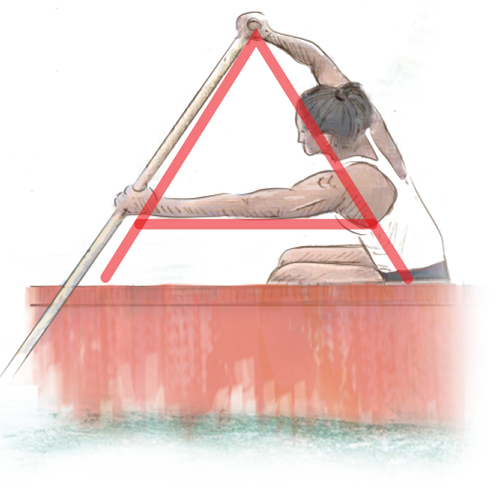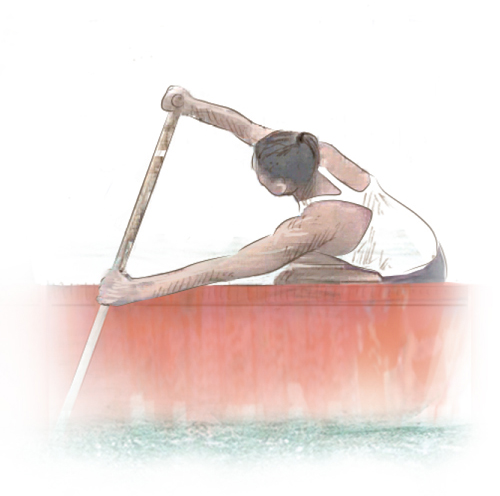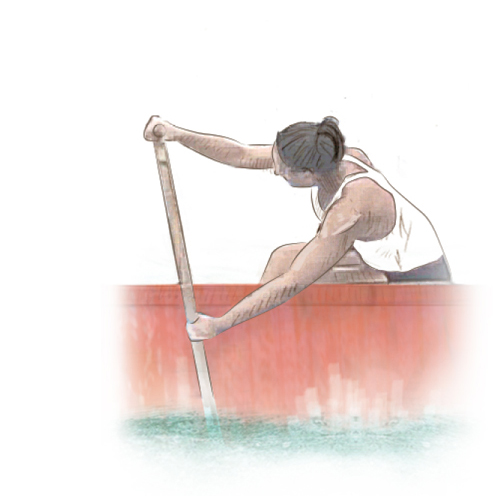Racing rules require paddles to be between 105-130cm in length. The optimum measurement is for the height of the paddle to reach a paddler’s armpit

1. 'A' position
Turn your back to the water. Reach forward stretching arm and back. Place paddle at thigh of paddler in front of you. Lean body outside boat, top arm straight, top shoulder over the water

2. 'Catch' and drive
Enter blade fully in water at approximately 60-degree angle. Pull and counter rotate with lower arm, shoulder and back. Drive down aggressively with top arm

3. Pull and exit
Paddler uses back muscles to pull blade parallel with boat. The blade exits the water when the paddle arrives at the paddler's hip. Using their top arm, paddlers lift the blade from the water
